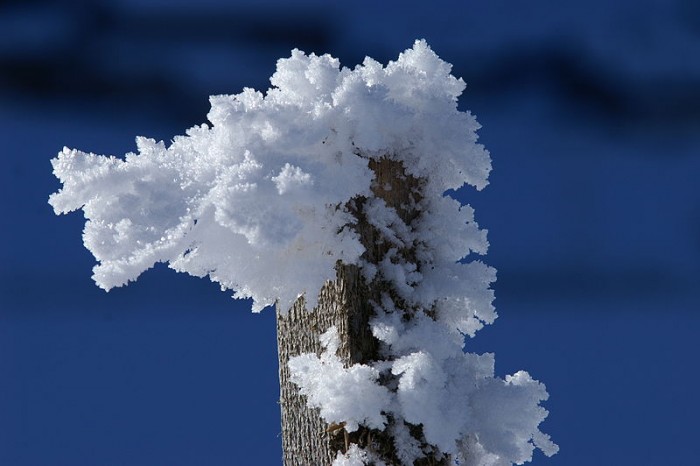Incredible Ways to Survive the Winter
Freeze tolerant animals allow their bodies to freeze and when spring arrives they thaw and come back to life. The wood frog is an outstanding example of this method.
 Image: By böhringer friedrich (Own work) [CC-BY-SA-2.5 (http://creativecommons.org/licenses/by-sa/2.5)], via Wikimedia Commons
Image: By böhringer friedrich (Own work) [CC-BY-SA-2.5 (http://creativecommons.org/licenses/by-sa/2.5)], via Wikimedia Commons Winter is rapidly closing in and before we know it temperatures will fall below freezing. While we remain comfortable in our homes, the animals will have to brave the cold. So how do they cope with freezing temperatures? There are a host of different strategies that animals use to survive the winter, from migrating thousands of miles to allowing them selves to freeze solid. These two strategies, I think, are the most extraordinary examples of survival.
Migration is a great way to escape the cold and it is amazing the lengths some animals go to just to spend a summer elsewhere. Bar-headed geese, like all geese, migrate before winter to warmer climates. The trouble for these geese is that their wintering grounds are in India and this means crossing the highest mountain range in the world, The Himalayas. To do this they must reach altitudes of 33,000 feet, making them the highest flying bird, not to mention one of the strongest and most well adapted. Winds at this height can reach 100 mph, so these birds continually need to use their wings; gliding is not an option. At this altitude there is scarcely enough oxygen to power the flight muscles of an average goose. However, bar-headed geese have muscles containing more mitochondria, allowing them to harness more energy from small amounts of oxygen. They can therefore fly for many hours in these hostile conditions.
Perhaps an even more extraordinary strategy is freeze tolerance. Freeze tolerant animals allow their bodies to freeze and when spring arrives they thaw and come back to life. The wood frog is an outstanding example of this method. Usually freezing is lethal, because the formation of ice crystals causes damage to vital tissues, particularly blood vessels and organs. However, wood frogs use special proteins called ice nucleators to encourage freezing so that controlled ice sheets form. These run between tissues and encase organs before spontaneous crystals can develop. Furthermore, they drastically increase the glucose levels in their tissues creating a thick sugary solution inside cells that will not freeze. This ensures that cells will still be functional when temperatures rise.
These are merely two of the many incredible adaptations that animals have developed to survive harsh winter climates.



2 Comments
A well written and intriguing article… keen to learn more.
Very impressed Richard